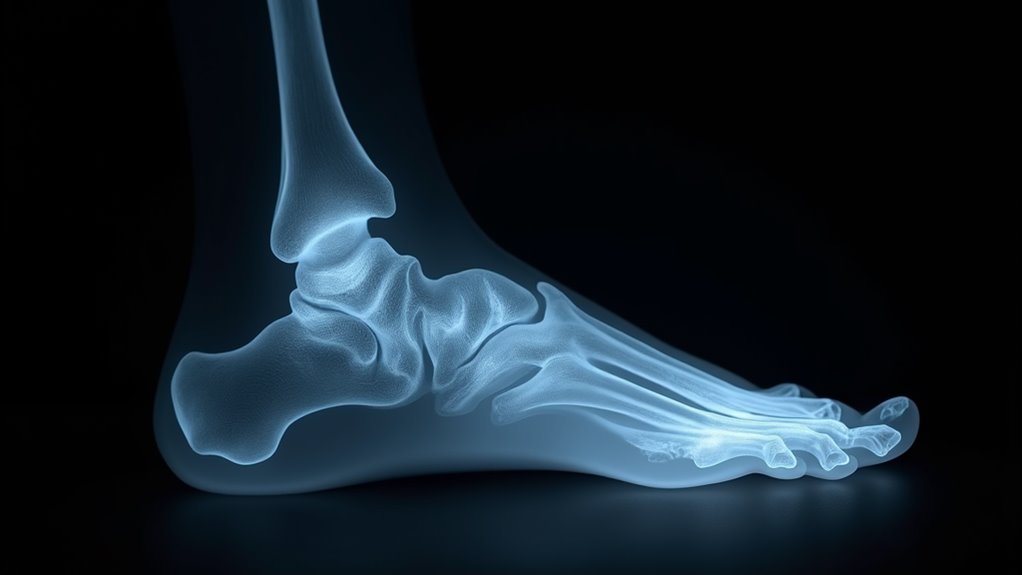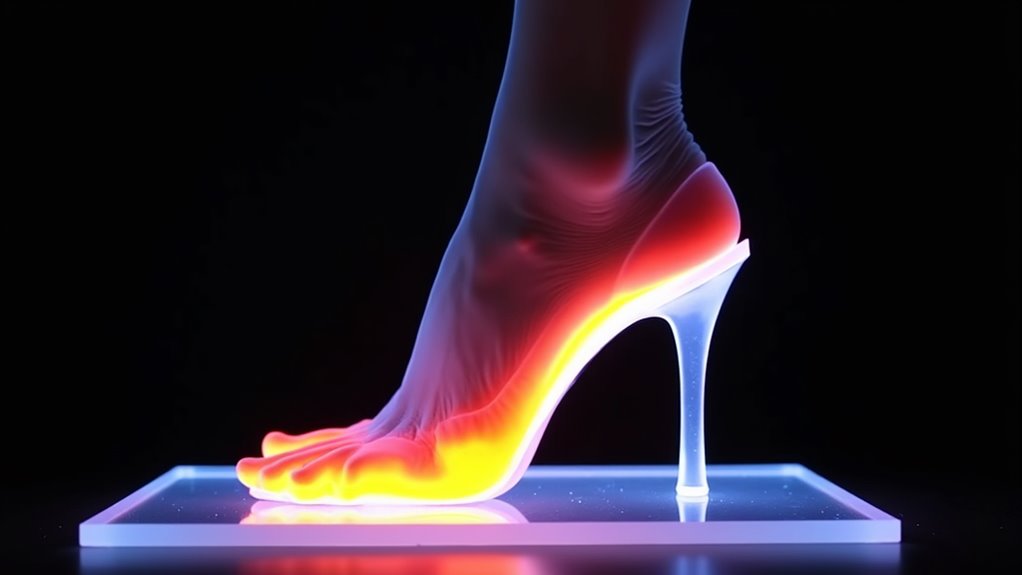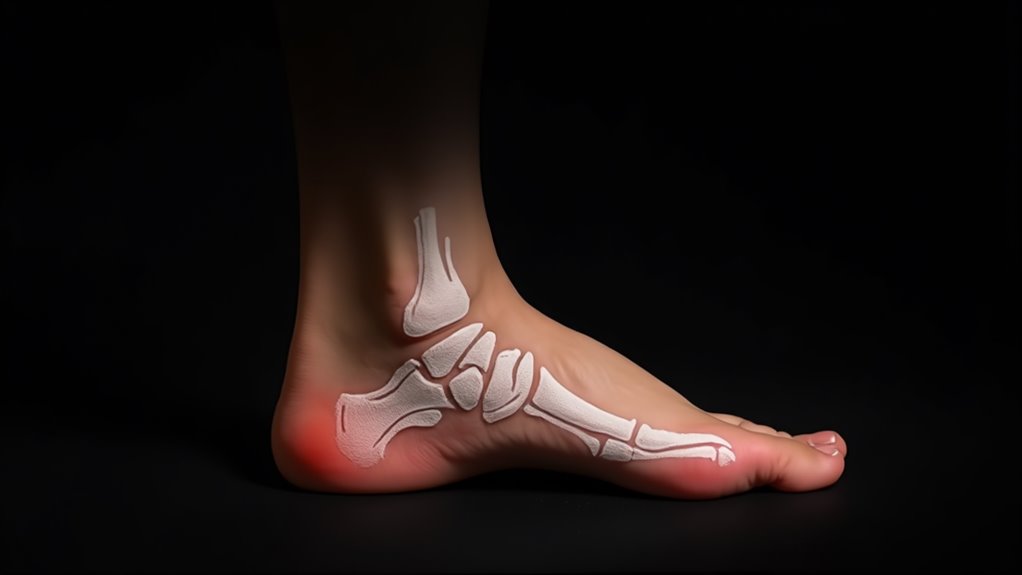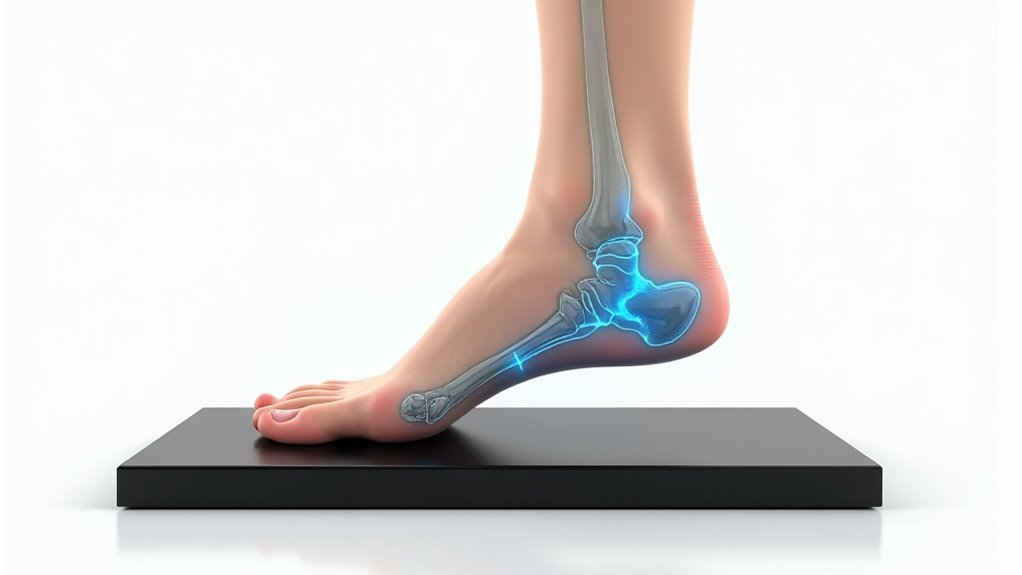There may be products. Products are independently selected by our editors. We may earn an affiliate commission from the links with no charge to you, example: as Amazon Affiliate.
You’ll find your feet are marvels of engineering that weren’t designed for stilettos. With 26 bones, 33 joints, and over 100 muscles working together, your feet naturally distribute weight and absorb shock while you walk. Yet, when you slip into those elegant high heels, you’re altering this delicate mechanism in ways that can lead to both immediate discomfort and long-term problems. Understanding how your feet function and respond to different heel heights can help you make smarter choices about when and how to wear your favorite elevated shoes.
Key Takeaways
- Your foot’s complex structure of 26 bones and 33 joints works together to distribute weight and absorb shock during movement.
- High heels shift weight forward, increasing pressure on the forefoot by up to 75% and altering natural walking patterns.
- The ball of your foot bears excessive pressure in heels, potentially leading to metatarsalgia and other painful conditions.
- Platform soles and thicker heel bases help distribute weight more evenly across the foot’s three main sections.
- Regular stretching and alternating between heel heights helps maintain foot flexibility and prevent tendon strain.
Basic Foot Structure and Function

The human foot is a marvel of biological engineering, containing 26 bones and 33 joints that work together in perfect synchronization. When you walk in high heels, you’re engaging over 100 ligaments and tendons that provide stability and enable complex movements throughout your foot.
Your foot’s structure is divided into three main sections: the hindfoot, midfoot, and forefoot. Each section plays a vital role in supporting your body weight and maintaining balance.
The bones in your feet include seven tarsals in the rear and middle, five metatarsals forming the bridge, and fourteen phalanges making up your toes. Together, they create a sophisticated shock absorption system that helps distribute pressure and transfer ground forces up through your body.
High Heels Impact Your Feet
While your feet are designed as remarkable shock absorbers, wearing high heels disrupts this natural functionality and creates a cascade of biomechanical problems. Your body weight shifts forward dramatically, increasing pressure on your forefoot by up to 75% and forcing your toes into an unnatural position.
| Impact Area | Short-Term Effects | Long-Term Damage |
|---|---|---|
| Forefoot | Pain & Pressure | Bunions & Hammertoes |
| Tendons | Restricted Movement | Shortened Achilles |
| Spine | Shock Wave Transfer | Vertebrae Compression |
When you wear high heels, you’re altering your natural gait and restricting ankle movement. This creates a shock wave that travels up through your body, potentially causing inflammation from your feet to your lower back. Your knees bend more to compensate, leading to increased joint stress and potential long-term complications. Modern comfort-focused heel designs prioritize proper weight distribution to minimize these biomechanical issues.
Measuring Pressure Points

Modern pressure-measuring techniques reveal alarming statistics about how high heels affect your feet. When you wear heels, the pressure points in your feet shift dramatically, with your forefoot bearing the brunt of the impact. A 2.5cm heel increases forefoot pressure by 22%, while a 7.5cm heel spikes it by 76%.
Your body weight concentrates heavily on the ball of your foot and heel, causing potential issues like metatarsalgia and blisters. The higher your heels, the more pressure you’ll experience on your medial forefoot and hallux.
These changes don’t just affect your feet – they impact your entire posture. You’ll notice reduced pressure in your arch area, which can lead to instability and balance problems.
To protect your feet, consider lower heel heights and shoes with wider toe boxes. For optimal comfort and support, look for adaptable formal heels that can adjust to your unique foot anatomy throughout the day.
Prevention and Protection Strategies
With pressure points posing significant risks to foot health, implementing smart prevention strategies can help you maintain comfort while wearing heels.
You’ll want to focus on proper shoe selection by choosing heels with thicker bases, gradual slopes, and adequate cushioning.
Don’t forget to use protective measures like silicone pads and blister bandages to minimize friction points.
Take care of your feet by alternating between high heels and lower shoes, and never wear heels higher than 7.5cm for long periods.
You can protect yourself further by performing daily stretching exercises and using ice packs when needed.
Consider investing in platform soles to reduce perceived heel height, and always ensure you’re wearing the correct size by having your feet measured regularly.
Look for shoes featuring comfort technology heels that provide enhanced cushioning and support throughout the day.
Recognizing Warning Signs of Damage

Since high heels dramatically alter your foot’s natural position, it’s crucial to recognize early warning signs of damage before they become serious problems. When you wear high heels, you’ll place excessive pressure on your forefoot, leading to potential issues throughout your feet, ankles, and posture.
| Warning Sign | What’s Happening | Action Needed |
|---|---|---|
| Ball of foot pain | Uneven weight distribution | Rest, use cushioned inserts |
| Toe crowding | Narrow toe box compression | Switch to wider shoes |
| Ankle instability | Tendon strain and weakness | Strengthen ankle muscles |
Watch for changes in your walking pattern, persistent discomfort, or difficulty wearing flat shoes. If you notice your toes beginning to deform or develop bunions, it’s time to reassess your footwear choices. Don’t ignore signs of muscle fatigue or cramping in your calves and feet. Choosing shoes with supportive heel design can help minimize discomfort and prevent long-term foot problems.
Conclusion
Your feet’s remarkable design deserves protection, even when you’re sporting those killer heels. Like Sarah, a 32-year-old executive who prevented chronic foot pain by switching to varying heel heights throughout her workweek, you’ll benefit from understanding your foot’s anatomy. By recognizing pressure points and warning signs, you can make informed choices that keep you strutting comfortably without sacrificing style.

